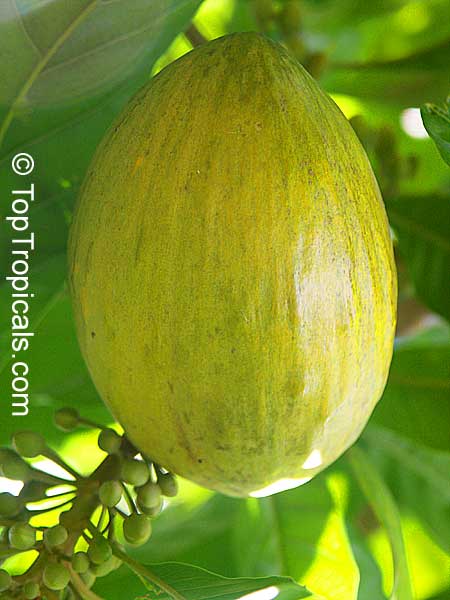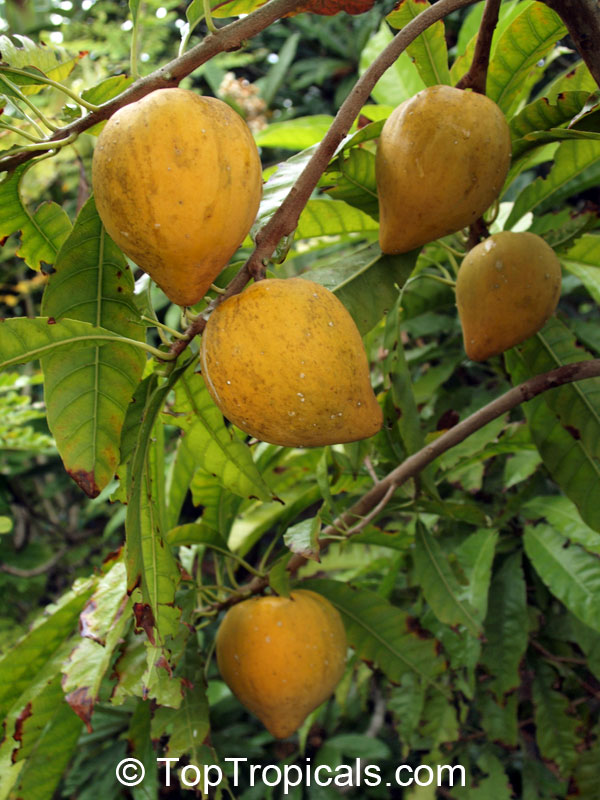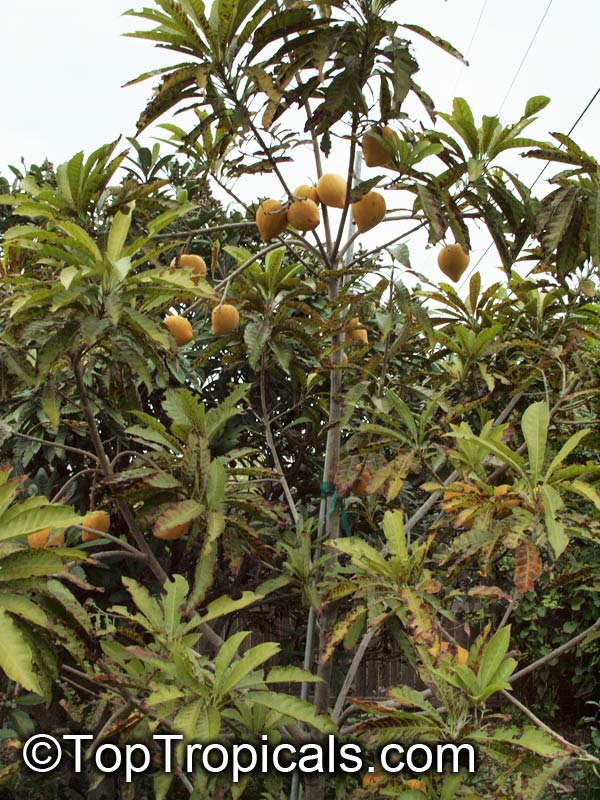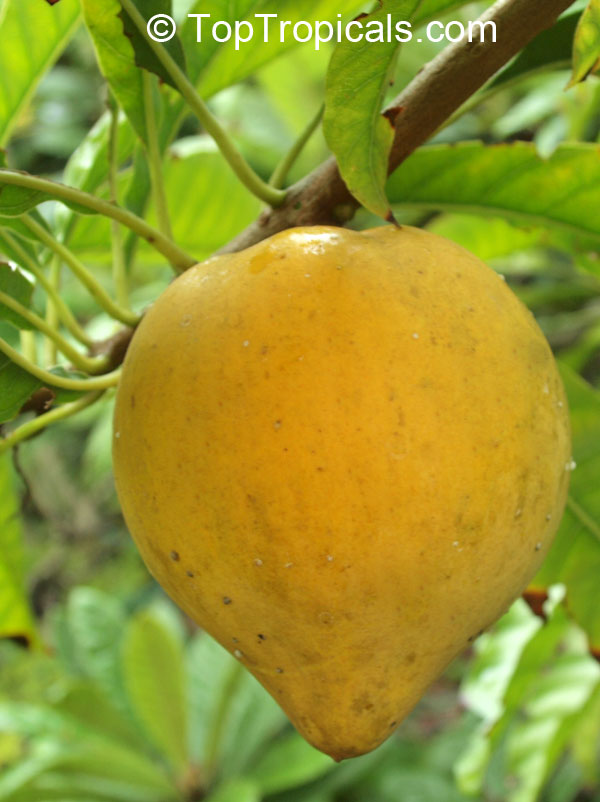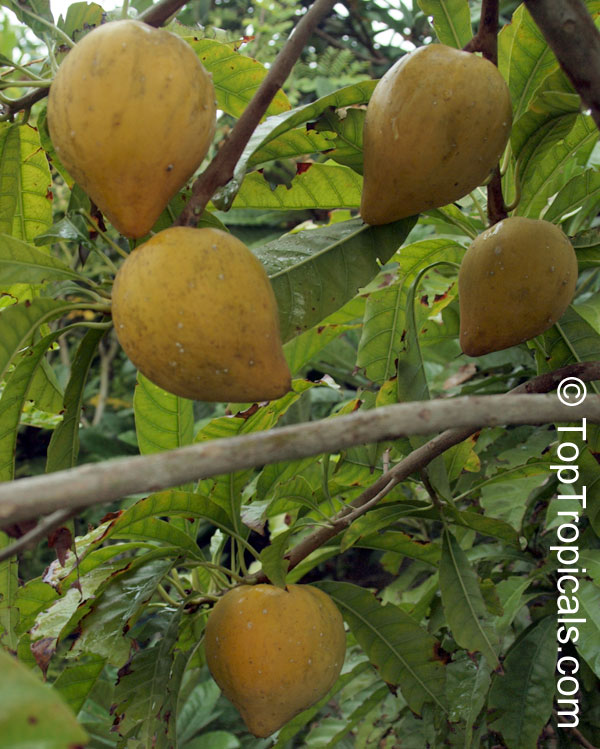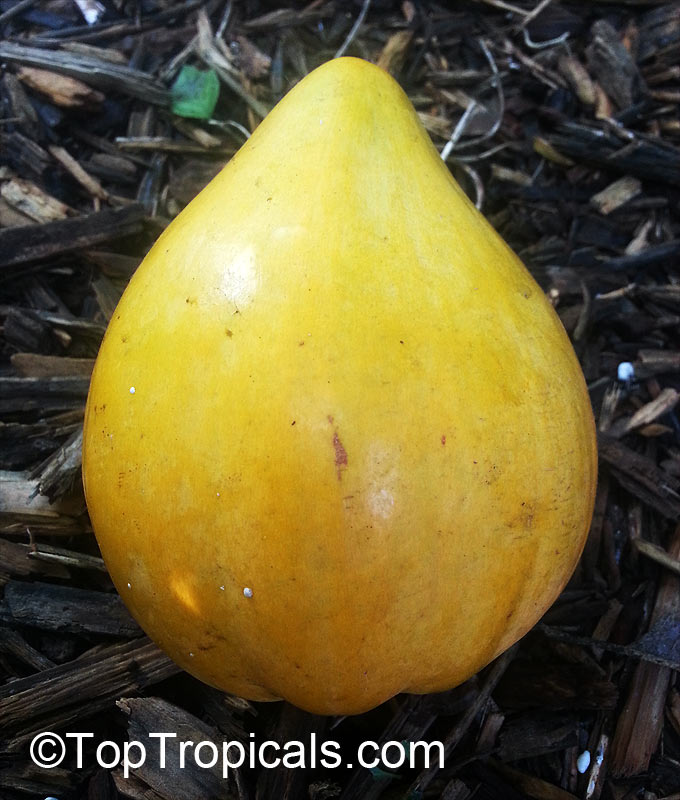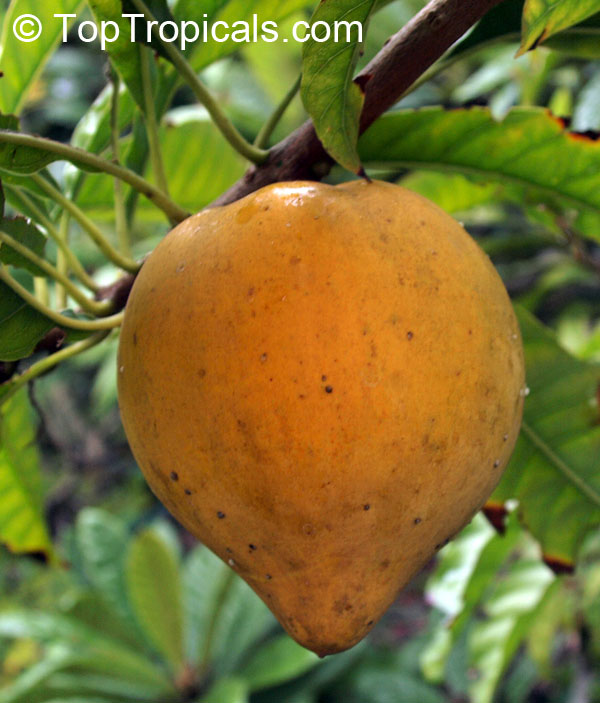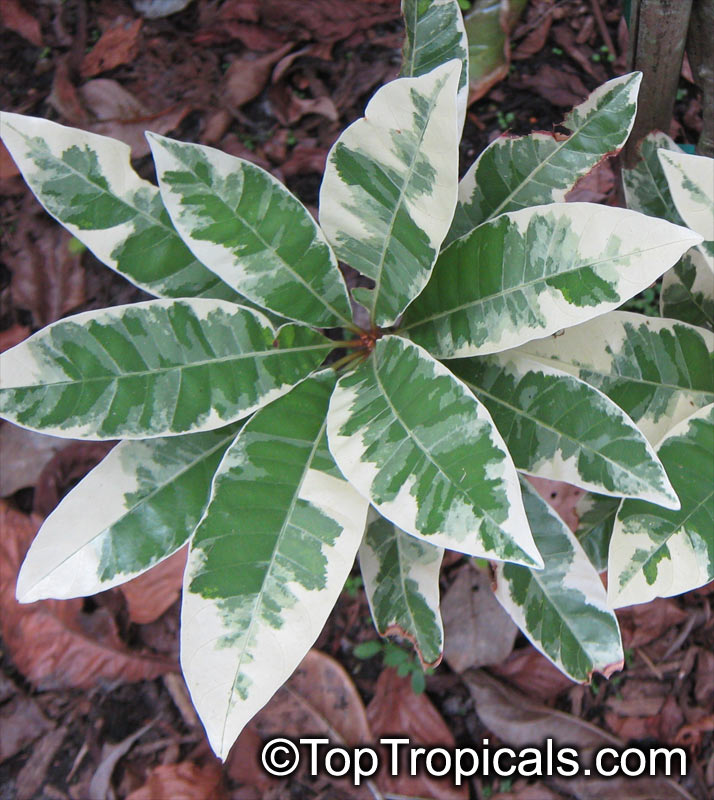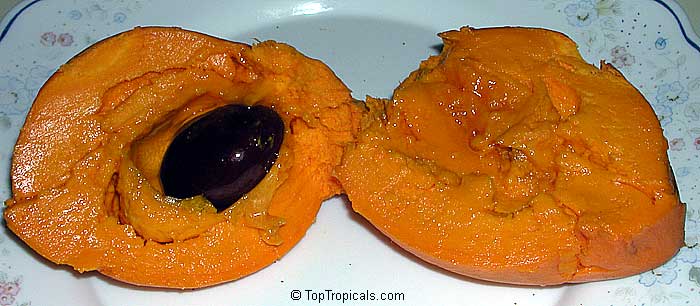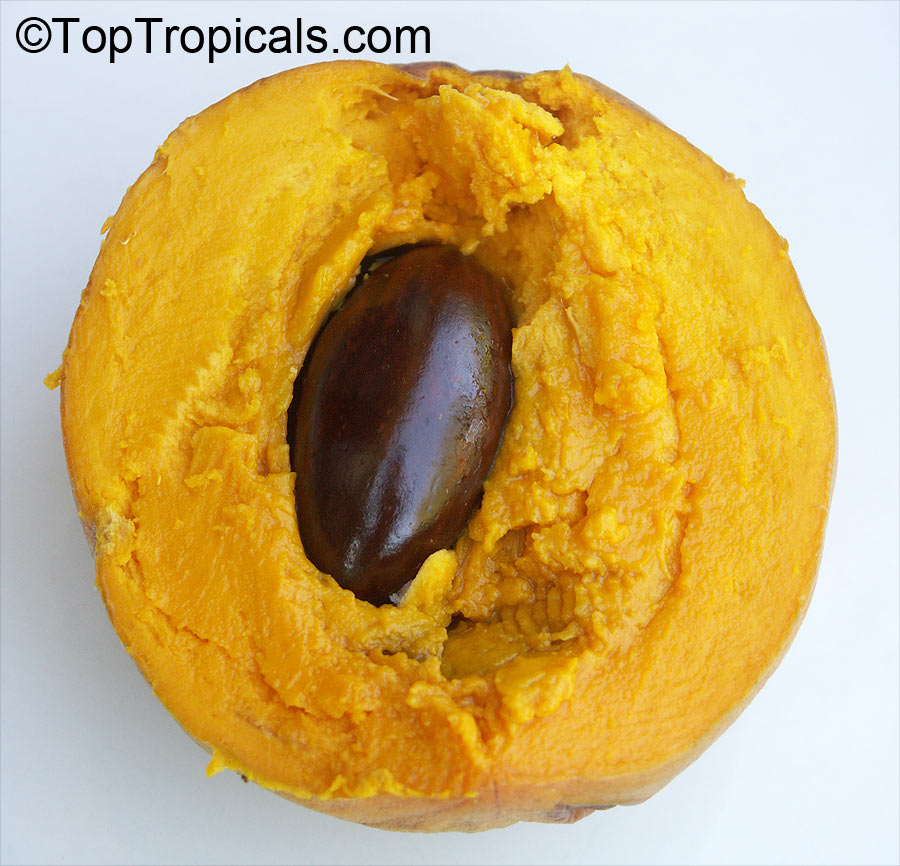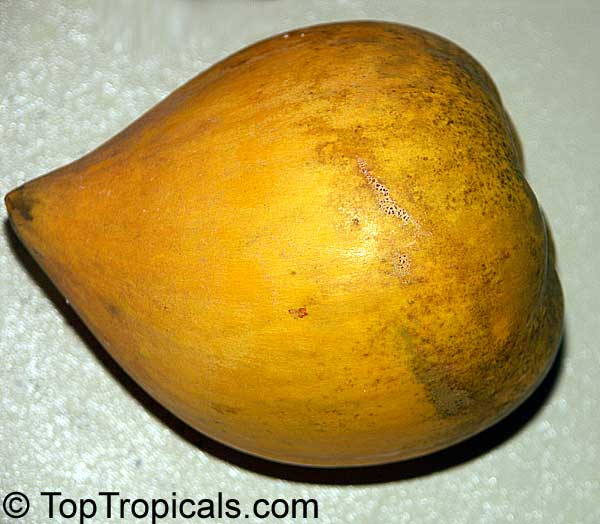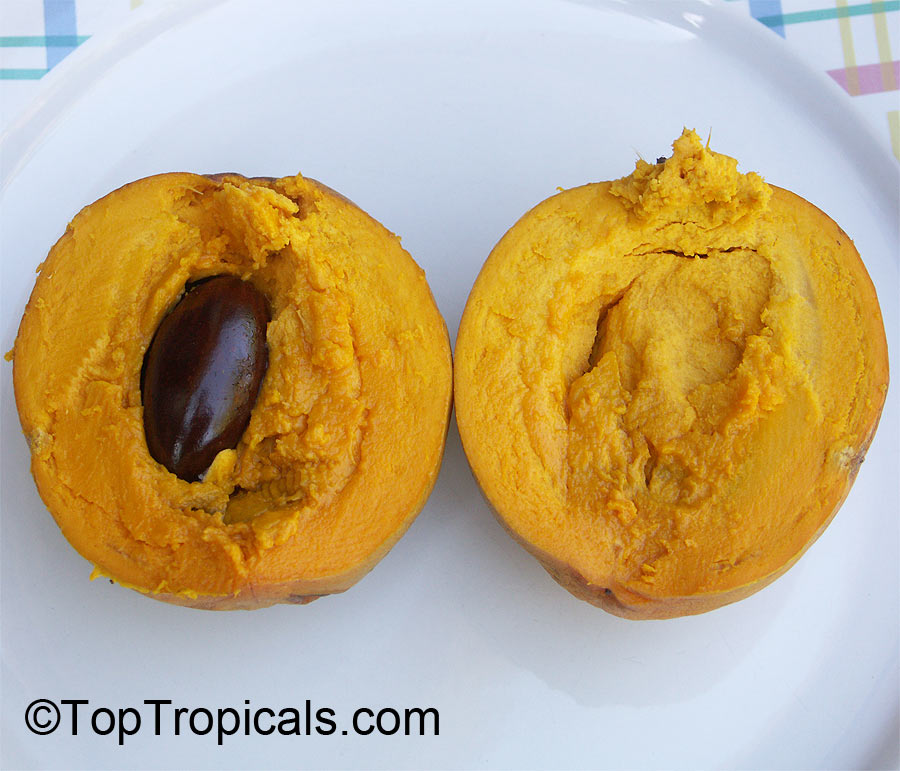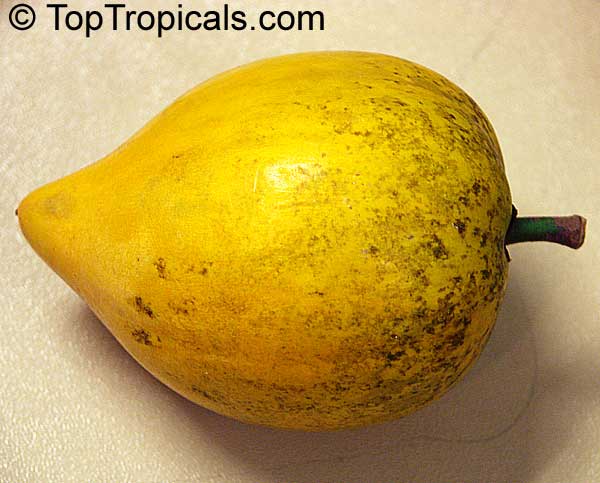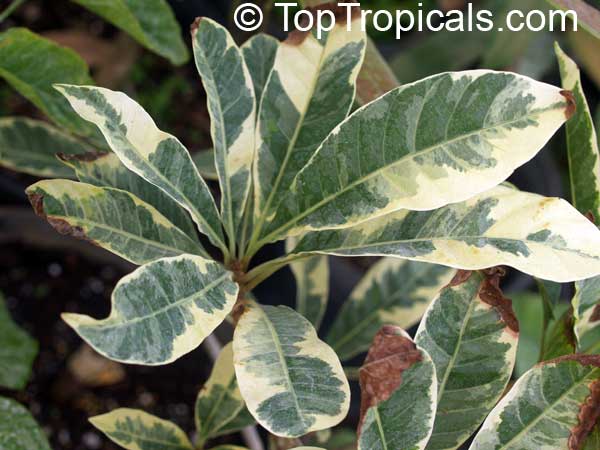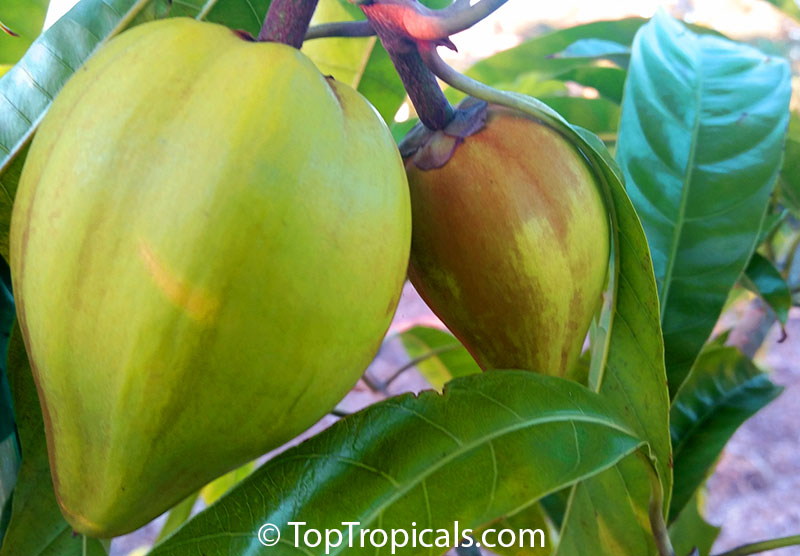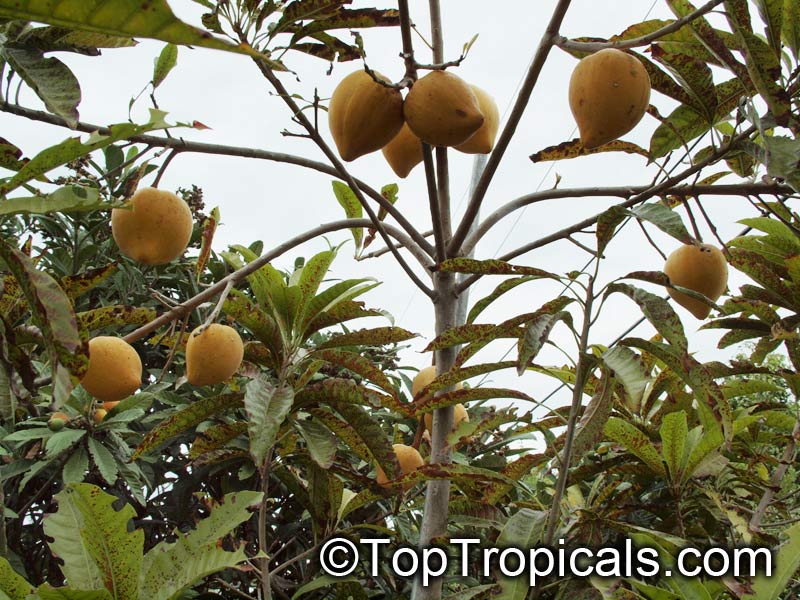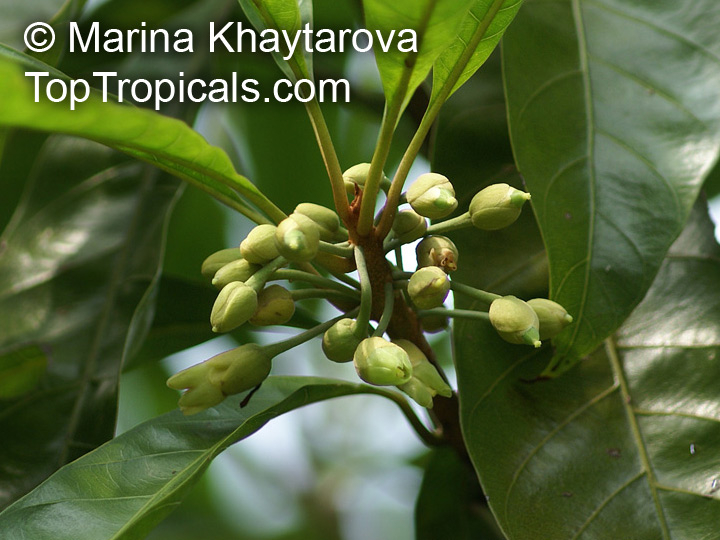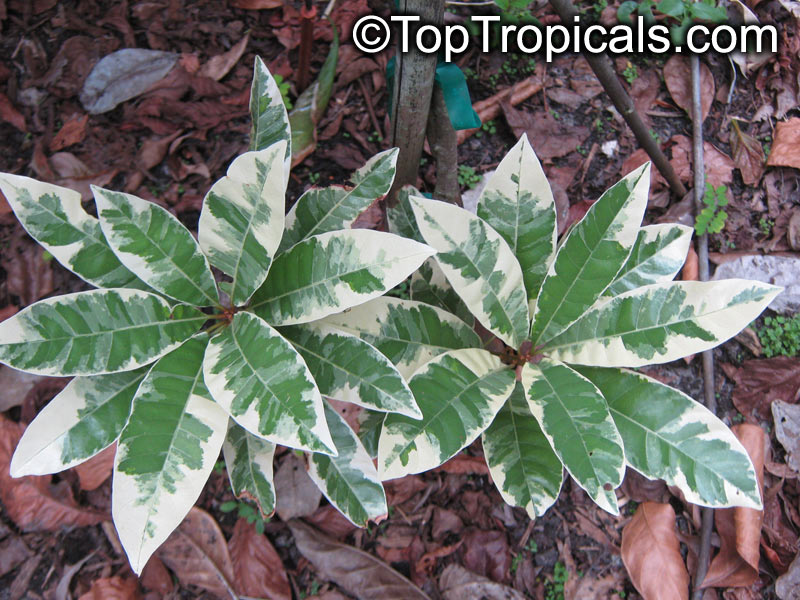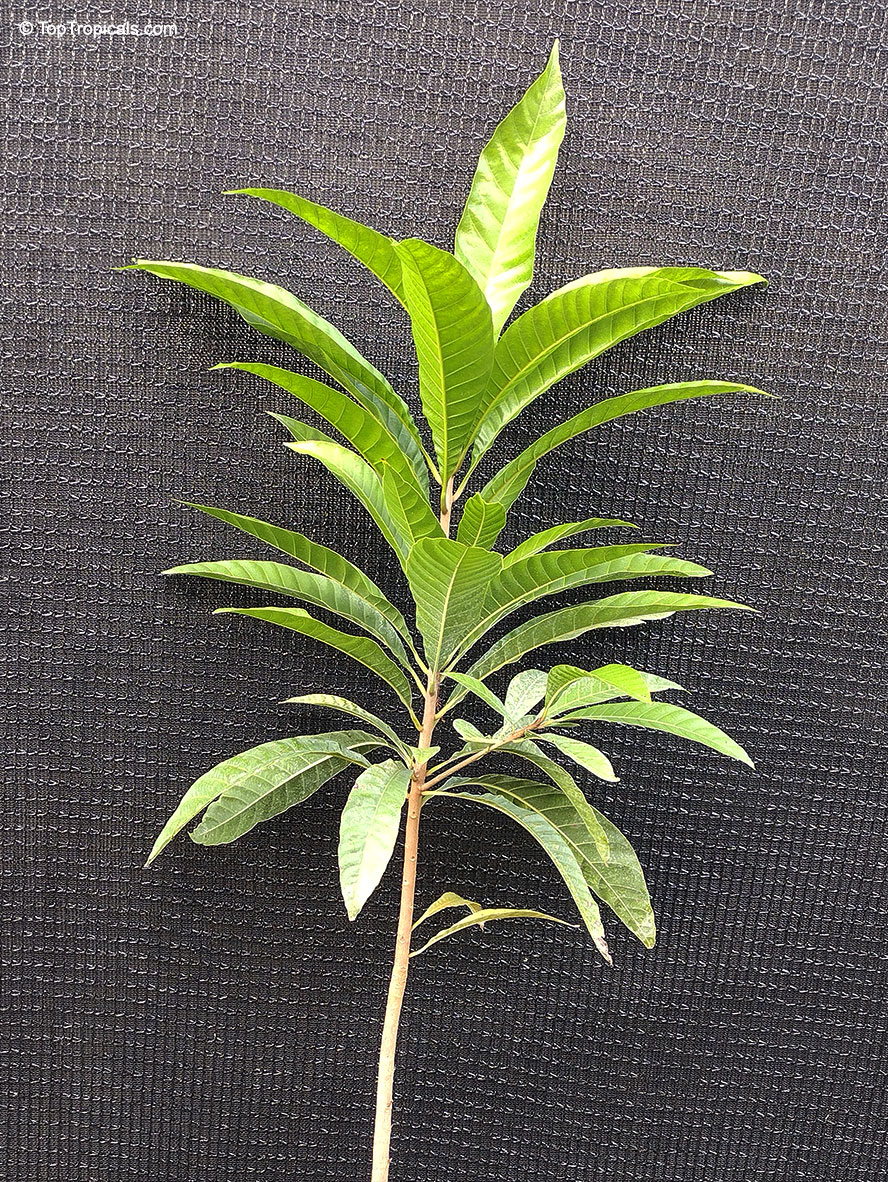Pouteria campechiana (Canistel)
Top Tropicals Plant Encyclopedia
Botanical name: Pouteria campechiana
Common names: Canistel, Eggfruit, Chesa
Family: Sapotaceae
Origin: Central America





This tree is native to Southern Mexico, Belize, Guatemala and El Salvador. During World War II, British pilots and crewmen were under training in the Bahamas, and showed great fondness for this special fruit, they bought all they could find in the market.
The tree is of medium size, generally no more than 25 ft, and slender in habit, with a dense spreading crown. The plant has abundant white, gummy latex. Fragrant, bisexual flowers are solitary or in small clusters, borne in the leaf axils or at leafless nodes.
Canistel is the showiest fruit of the family. Extremely variable in form and size, it may be nearly round, with or without a curved beak, or may be somewhat oval, spindle-shaped, or even heart-shaped. On ripening, the very smooth and glossy skin turns lemon-yellow or pale orange-yellow, Beneath the skin the yellow flesh is relatively firm and mealy. Toward the center of the fruit it is softer and more pasty. It has been often likened in texture to the yolk of a hard-boiled egg. The flavor is sweet, musky, and somewhat like that of a baked sweet potato.
The fruit can be eaten with salt, pepper and lime or lemon juice or mayonnaise, either fresh or after light baking. The pureed flesh may be used in custards or added to ice cream mix just before freezing. A rich milkshake, or "egg-fruit-nog", is made by combining ripe canistel pulp, milk, sugar, vanilla, nutmeg or other seasoning in a blender. Canistel pulp can be used as a spread on a toast, for making pancakes, cupcakes, jam, and marmalade.
Season: September - March. May fruit twice a year. Well adapted to South Florida. Eaten fresh, used in cooking, pies, excellent in ice cream. In a milk shake tastes like egg nog. Very similar in taste to Lucuma from Andean countries. This fruit taste is between Ciku and Camote (yam).
See Article about this plant:
Pouteria campechiana - Canistel, the curious heart-shaped Egg Super-Fruit.
Similar plants: Pouteria campechiana (Canistel)
Recommended Fertilizer: SUNSHINE C-Cibus - Crop Nutrition Booster
SUNSHINE-Honey - sugar booster
Canistel, Eggfruit. Easy to grow, sweet exotic fruit. These plants are seedlings (planted 2021) from Bruce variety, fruiting size.
See Article about this plant:
Pouteria campechiana - Canistel, the curious heart-shaped Egg Super-Fruit.
The Canistel tree (Pouteria campechiana) is a small to medium-sized evergreen tree that thrives in tropical and subtropical regions. It has glossy green leaves and produces fruit several times a year once established. Hardy and low-maintenance, the tree is valued not only for its nutritious fruit but also as an attractive landscape addition for gardeners seeking an unusual, productive specimen.
Canistel, also called Eggfruit, is a tropical delicacy prized for its creamy, custard-like texture and sweet, rich flavor that's often compared to baked sweet potato or pumpkin pie. With its vibrant yellow to deep orange flesh and subtle eggy aroma, Canistel is a standout among exotic fruits. Grown in warm climates, this fruit is as nutritious as it is delicious.
Packed with beta-carotene, dietary fiber, and a range of vitamins and minerals, Canistel supports healthy vision, digestion, and immune function. It's perfect for blending into smoothies, baking into custards or pancakes, or even enjoyed fresh with a spoon. Naturally thick and velvety, it's a favorite in vegan recipes and tropical dessert creations.
Recommended Fertilizer: SUNSHINE C-Cibus - Crop Nutrition Booster
SUNSHINE-Honey - sugar booster
Canistel, Eggfruit. Easy to grow, sweet exotic fruit. These plants are seedlings (planted 2021) from Bruce variety, fruiting size.
See Article about this plant:
Pouteria campechiana - Canistel, the curious heart-shaped Egg Super-Fruit.
The Canistel tree (Pouteria campechiana) is a small to medium-sized evergreen tree that thrives in tropical and subtropical regions. It has glossy green leaves and produces fruit several times a year once established. Hardy and low-maintenance, the tree is valued not only for its nutritious fruit but also as an attractive landscape addition for gardeners seeking an unusual, productive specimen.
Canistel, also called Eggfruit, is a tropical delicacy prized for its creamy, custard-like texture and sweet, rich flavor that's often compared to baked sweet potato or pumpkin pie. With its vibrant yellow to deep orange flesh and subtle eggy aroma, Canistel is a standout among exotic fruits. Grown in warm climates, this fruit is as nutritious as it is delicious.
Packed with beta-carotene, dietary fiber, and a range of vitamins and minerals, Canistel supports healthy vision, digestion, and immune function. It's perfect for blending into smoothies, baking into custards or pancakes, or even enjoyed fresh with a spoon. Naturally thick and velvety, it's a favorite in vegan recipes and tropical dessert creations.
Recommended Fertilizer: SUNSHINE C-Cibus - Crop Nutrition Booster
SUNSHINE-Honey - sugar booster
Recommended Fertilizer: SUNSHINE C-Cibus - Crop Nutrition Booster
SUNSHINE-Honey - sugar booster
